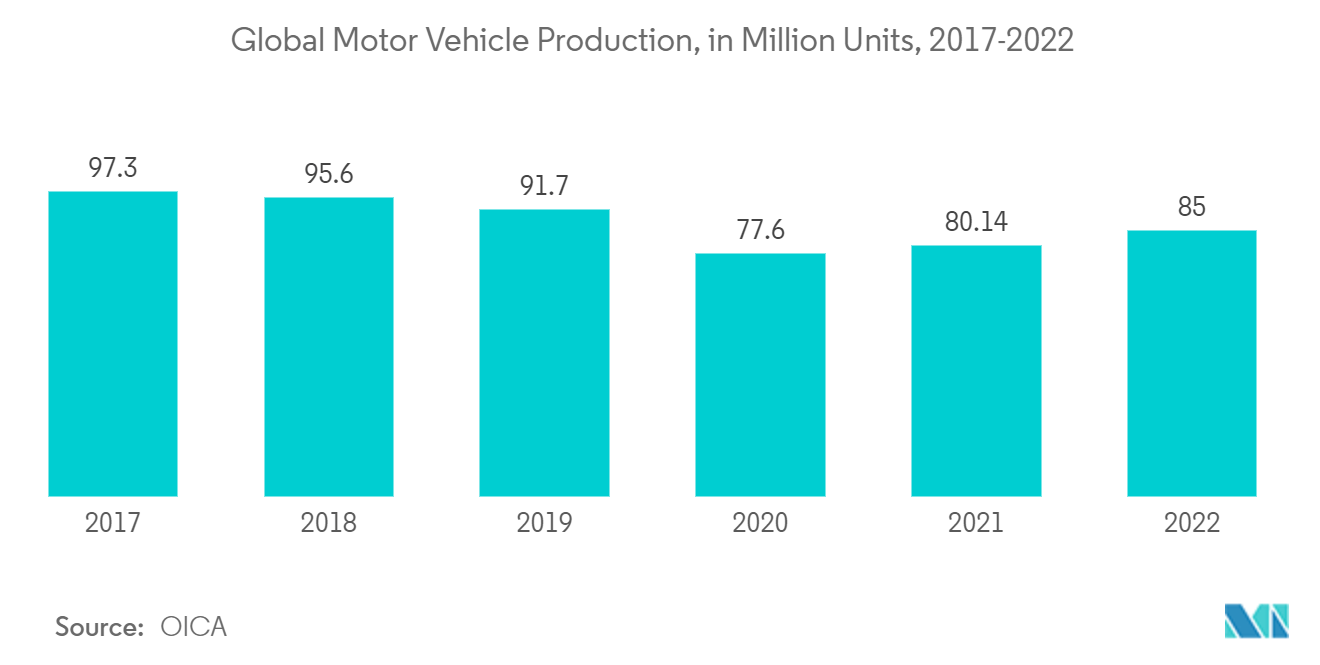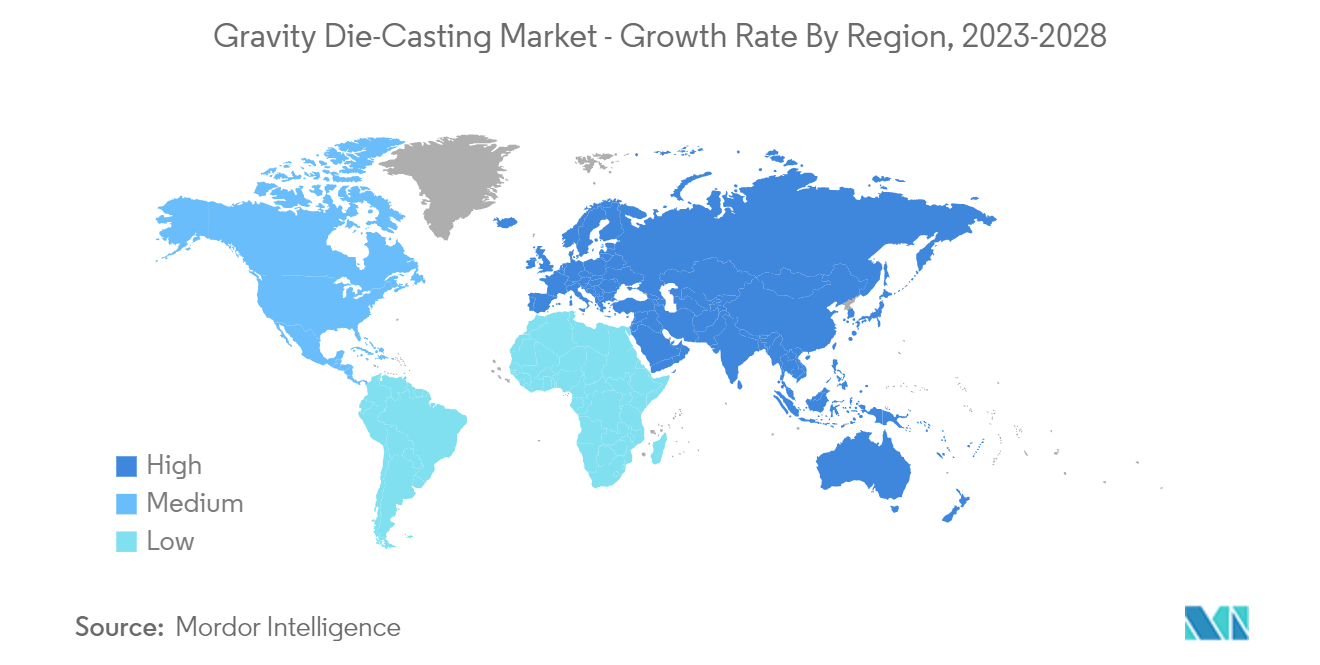Market Trends of Gravity Die Casting Industry
Automotive Industry is Expected Capture Major Market Share
Gravity die casting is a standard process for manufacturing some high-integrity automotive parts. This process produces fine-grained and dense structures with attractive mechanical properties, due to the fast and oriented hardening of the melts in permanent metal molds, which makes it ideal for components like engine-related parts.
But the trend away from the combustion engine toward alternatives like electric powered vehicles has inevitable effects on the demand for die-casted parts. For instance, while a combustion engine contains approximately 200 casted parts, only around 25, i.e., one tenth of them, are needed for an electrical drivetrain.
Factors such as lowering carbon emissions increased government initiatives to promote the usage of lighter vehicles, and rapid development of technology in automotive die-casting machines are anticipated to boost demand in the market.
Driven by ecological and economic requirements, the global automotive industry has been creating new body-in-white designs in which structural die-cast components help significantly reduce weight. Moreover, the production of die-cast structural components has increased even more due to incorporating functions into the castings, new aluminum alloy concepts, and new component design trends. Moreover, growing vehicle sales, not only in the passenger car segment but also for commercial vehicles, are expected to support the market’s growth.
The automotive industry consumes over 60% of the cast products used worldwide. Thereby, considering the growth opportunities associated with the automobile and transportation industry, several players in the market are focusing on manufacturing plant expansion. For instance,
- November, 2022: General Motors announced an investment of USD 45 million in expanding its aluminum die-casting foundry in Bedford, Indiana, to feed two metro Detroit assembly plants that will produce electric vehicles.
- August, 2022: Stellantis announced an investment of USD 14 million in the Kokomo casting plant. The investment at the Casting Plant will be used to convert existing die-cast machines and cells for 1.6-liter, I-4 turbocharged units with direct fuel injection and flexibility for hybrid-electric vehicle (HEV) applications.
This method also gives better tolerances and surface finish than other methods, like sand casting. Hence, it represents a proven technology to produce fairly large batch quantities of the order of 1,000 to 10,000. But tooling costs vary and are generally higher than the sand-casting method.
Hence, manufacturers are expected to revamp their portfolio to the changing market conditions, which is expected to drive the market over the forecast period.

Asia-Pacific Dominates the Market
The Asia-Pacific region is witnessing rapid industrialization, driven by increasing investments in manufacturing and infrastructure development. This is expected to create new opportunities for the gravity die-casting market, as several industries such as aerospace, defense, and construction are expected to witness significant growth in the region.
The Asia-Pacific region is the biggest and fastest-growing market for gravity die casting because of a number of factors, like the growing demand for lightweight components, rising disposable incomes, and a growing emphasis on energy efficiency and sustainability.
The gravity die-casting market in the Asia-Pacific region is largely driven by China, the largest automotive market in the world. Gravity die-casting is expected to be in high demand in China as a result of the government's efforts to encourage the use of lightweight and energy-efficient components. Also, the rising reception of electric vehicles in China is supposed to set out new open doors for the market.
Due to rising disposable incomes and an increasing focus on fuel efficiency, India, another significant market in the Asia-Pacific region, is experiencing a growing demand for lightweight components. Gravity die casting is expected to be in high demand in India as a result of the government's efforts to encourage the use of lightweight and energy-efficient components. Additionally, the market is anticipated to benefit from the rising popularity of electric vehicles in India.
Significant demand for automobiles also led to the emergence of more original equipment and auto components manufacturers. As a result, India developed expertise in automobiles and auto components, which helped boost the demand for Indian die-casted auto components, propelling the market growth.
As per the Automobile Component Manufacturers Association (ACMA) forecast, auto component exports from India is expected to reach USD 30 Billion by 2026. The auto component industry is projected to record USD 200 Billion in revenue by 2026.
The region is seeing substantial technological advancements, which are projected to increase the usage of gravity die casting. Developments in materials science, design software, and automation technologies are predicted to increase gravity die casting efficiency and quality, making it more appealing to a variety of sectors.


